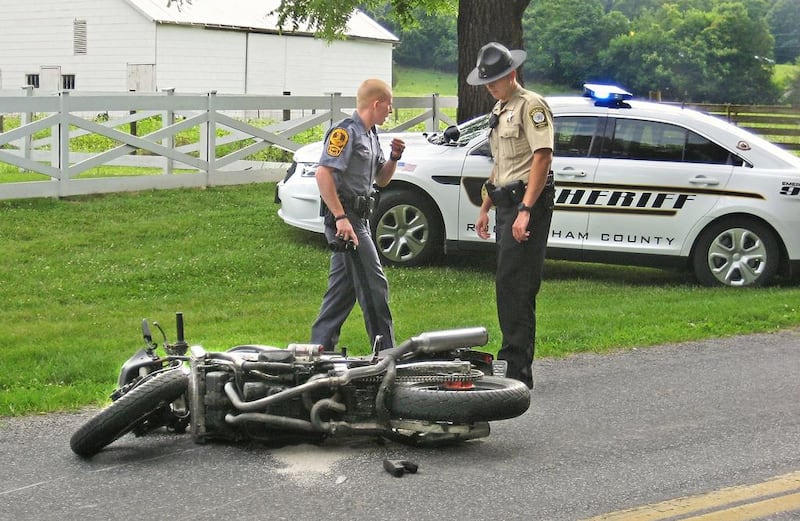Self-driving technology promises to pretty much transform the auto industry as we know it but it is also set to change the business of selling motorcycles – in a very different way.
World demand for motorcycles is forecast to expand nearly 6 per cent per annum to 132 million units in 2018, valued at $119.5 billion, according to the industry researcher Freedonia. Growth will be driven by an increasing number of households in industrialising countries who will be able to afford motorcycles as personal incomes rise.
However, that growth rate is expected to increase once self-driving cars become widely used.
For motorcycle companies, self-driving cars cannot come soon enough.
And if these self-driving cars embolden a new wave of easy riders, they will start showing up soon. Mark Reuss, the product development chief at General Motors, said new cars will be “mostly in charge” of driving by 2020 and fully in control by 2025. The Tesla Motors chief executive Elon Musk has a similar forecast – he thinks half of all cars made in 2022 or 2023 will be fully autonomous.
That will be the driver for a boom in motorcyce sales – it all comes down to safety, according to Karl Viktor Schaller, the head of development at BMW Motorrad. When robots are at the wheel, far fewer bikers will die on the road, which will not be lost on all those people who pine for a motorcycle but have always been too scared to buy one.
“It would mean a dramatic enhancement in safety for the motorbike,” Mr Schaller said. “And it would guarantee a wider user group.”
The maths is as straightforward as it is compelling. Consider a left turn on an American road: a vehicle turning across a lane of opposing traffic has little to do with the bike rider, but is one of the most dangerous things in motorcycling. When motorcyclists die on the road, this is how it happens one out of five times, according to crash statistics from the US national highway traffic safety administration.
At first, robot cars will be able to “see” the motorcycle with sensors or radar and either alert the driver or actively prevent the vehicle from cutting off the bike.
But that is just the beginning. Eventually, motorcycles will “talk” to all of the other vehicles on the road, constantly reminding them where they are, where they are heading, and at what speed. “We can use that to build an electronic safety cage around a motorbike,” Mr Schaller said.
Also supporting gains will be a sharp climb in the sales of electric motorcycles (e-bikes) outside of China, from what are currently very modest levels of demand, says Freedonia.
Worldwide, e-bikes and other electric motorcycle products will capture market share from internal combustion engine (ICE) models in most countries, including China. E-bikes are already becoming more popular because they are a convenient alternative, especially for older riders, and are environmentally friendly. Also, they cost considerably less than conventional motorcycles, usually do not require a licence, and have lower operating costs.
After climbing at a 12 per cent annual rate during the 2008-2013 period, electric motorcycle sales growth in China will slow noticeably through 2018 because of the maturity of the Chinese market, which accounted for the vast majority of the 2013 unit total.
However, outside of China, demand for electric motorcycles will continue to expand at a double-digit annual pace as the number of models available steadily increases, Freedonia says.
Self-driving motorcycles, meanwhile, may be farther off. Yamaha Motor, which is developing a bike-riding cyborg dubbed Motobot, estimates they will lag behind self-driving cars by at least a decade. But autonomous features will help motorcycle riders far sooner – BMW envisions a suite of systems that map the road ahead and alert the rider to curves and conditions. If the bike calculates that it is going too fast for upcoming terrain, it can warn its pilot.
Once every aspiring biker realises that the driver next to him is nott an existential threat, sales will climb. Xavier Mosquet, a senior partner at Boston Consulting Group, said the bike boost will be most pronounced in markets such as the U., where people ride for fun, and in China and India, where many choose motorbikes because they are relatively inexpensive transportation.
“I think it’s going to depend on the motivation and the location,” Mr Mosquet said.
The trade-off for cars getting safer is that it may make riding in them dull. But biking will be safer while remaining fun. Driving a motorcycle will be, well, driving. Riding in a car will largely be about checking email and catching up on Game of Thrones.
“We are not about going from A to B,” Mr Schaller said. “Motorbikes are about going from A to A. Our business is pleasure.”
business@thenational.ae
Follow The National's Business section on Twitter





